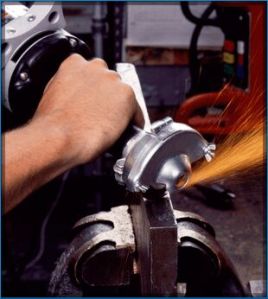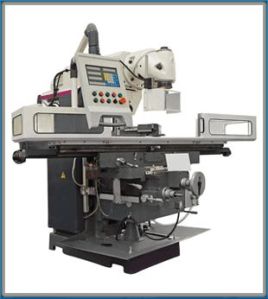Welcome to Knape Industries
Manufacturer / Exporter / Supplier Of Metal Structures Cutting, Turning Machining
-
Year of Establishment
1971
-
Primary Business
Supplier
-
Number of Employees
10-49
Welcome to Knape Industries
Manufacturer / Exporter / Supplier Of Metal Structures Cutting, Turning Machining

Year of Establishment
1971

Primary Business
Supplier

Number of Employees
10-49

Cutting is done by sawing, shearing or chiseling (all with manual and powered variants), torching with hand-held torches (such as oxy-fuel torches or plasma torches) and via numerical control (CNC) cutters (using a laser, mill bits, torch, or water jet). Bending is done by hammering (manual or powered) or via press brakes and similar tools. Modern metal fabricators utilize press brakes to either coin or air-bend metal sheet into form. CNC-controlled backgauges utilized hard stops to position cut parts in order to place bend lines in the correct position. Off-line programming software now makes programming the CNC-controlled press brakes seamless and very efficient. Assembling (joining of the pieces) is done by welding, binding with adhesives, riveting, threaded fasteners, or even yet more bending in the form of a crimped seam. Structural steel and sheet metal are the usual starting materials for fabrication, along with the welding wire, flux, and fasteners that will join the cut pieces. As with other manufacturing processes, both human labor and automation are commonly used. The product resulting from fabrication may be called a fabrication. Shops that specialize in this type of metal work are called fab shops. The end products of other common types of metalworking, such as machining, metal stamping, forging, and casting, may be similar in shape and function, but those processes are not classified as fabrication.

Turning machining Turning is a machining process in which a cutting tool, typically a non-rotary tool bit, describes a helical toolpath by moving more or less linearly while the workpiece rotates. The tool's axes of movement may be literally a straight line, or they may be along some set of curves or angles, but they are essentially linear (in the non-mathematical sense). Usually the term "turning" is reserved for the generation of external surfaces by this cutting action, whereas this same essential cutting action when applied to internal surfaces (that is, holes, of one kind or another) is called "boring". Thus the phrase "turning and boring" categorizes the larger family of (essentially similar) processes. The cutting of faces on the workpiece (that is, surfaces perpendicular to its rotating axis), whether with a turning or boring tool, is called "facing", and may be lumped into either category as a subset. Turning can be done manually, in a traditional form of lathe, which frequently requires continuous supervision by the operator, or by using an automated lathe which does not. Today the most common type of such automation is computer numerical control, better known as CNC. (CNC is also commonly used with many other types of machining besides turning.)
Share your thoughts with other customers for Knape Industries
Add Review